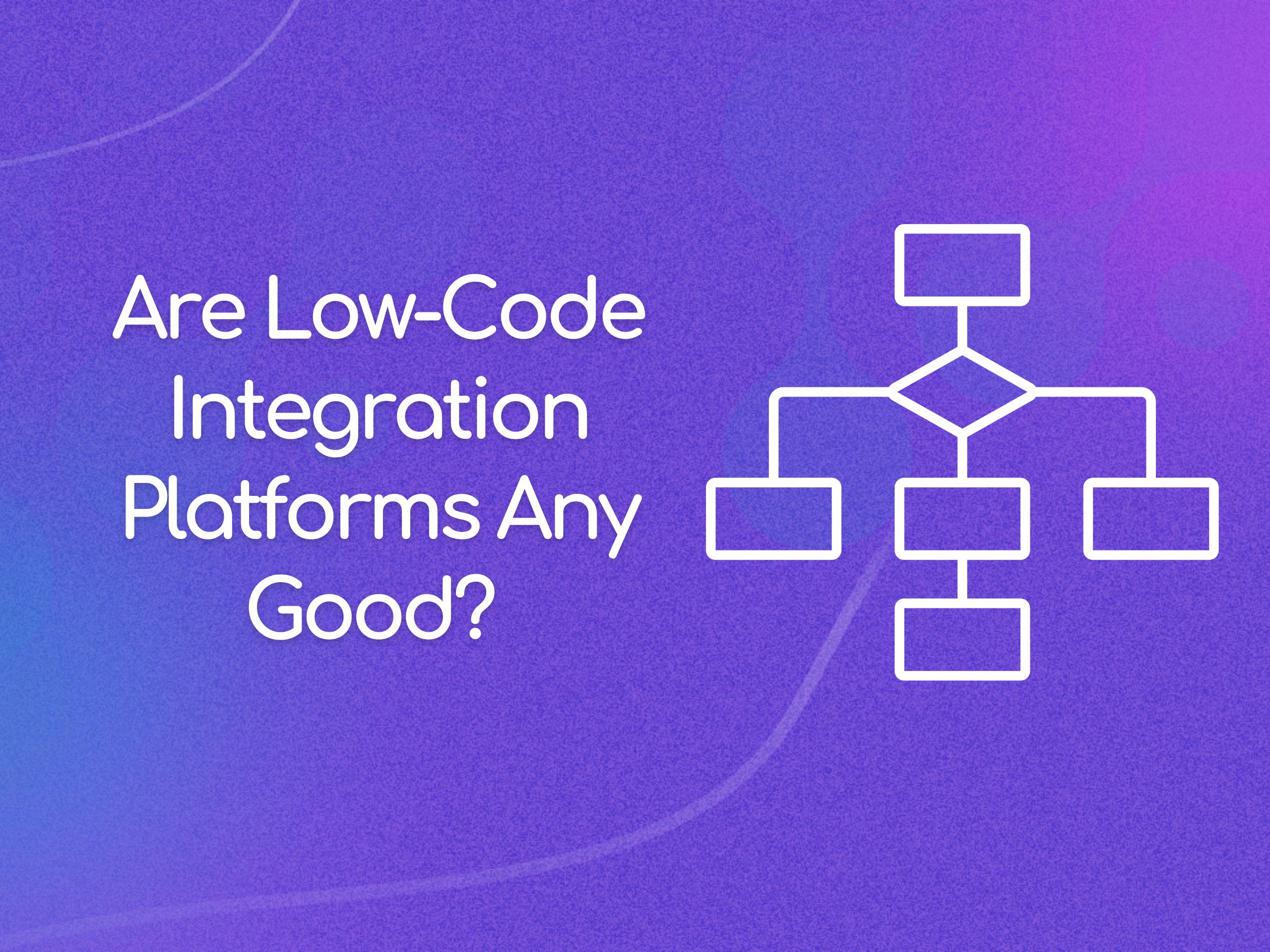Are Low-Code Integration Platforms Any Good?

We talk to a lot of people that build integrations, and want to do that faster with less effort. Low-code and no-code integration platforms are often appealing because they promise a quick fix and the potential to take building integrations out of developers hands. However we’ve also talked with many people that have tried these tools, and quickly realised that they don’t live up to the hype.
Here’s the real-world experience with low-code:
Limited Flexibility and Not Dev Friendly
Low-code tools reduce your flexibility, limit what you can do and are very difficult for devs to work with.




Vendor Lock-In
With low-code tools, you don't own your code. If you want to move to another vendor, or move things in-house, you need to start from scratch.
“Maybe you want some of the no-code features the other platforms offer and are willing to relinquish control to get them. But you’ll be at their mercy as a result.”
Travis Logan, CTO of Justuno : Read the full case study
Tech Debt and No Way to Fix Issues
Low-code tools make if very difficult to remedy any problems.
And if all this wasn’t enough to convince you, here’s some more articles:
- Low-code and No-Code: 19 Potential Downsides To Be Aware Of
- 8 Things Developers Don’t Like About Low-Code and No-Code
- Low Code Software Development Is A Lie
- Comments for Low-Code Software Is A Lie
- Why I’m Skeptical of Low-Code
From the Blog
.jpg)
What Does It Take to Ship an Integration?
.jpg)
